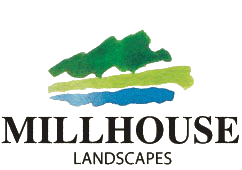Designing a Successful Garden
What does actually go into designing a successful garden? And what makes it worth hiring a professional garden designer?
A successful garden design is one that harmonizes with its surroundings, meets the needs and desires of the client, and evolves over time with proper care. Here are several things that contribute to a successful garden design;
Purpose & Functionality
A successful garden design starts with a clear understanding of its purpose and functionality. Whether it's for relaxation, entertainment, growing food, or enhancing aesthetics, the design should align with these goals.
Site Analysis with Layout and Spatial Planning
We are based in Kent and offer our landscape design service within Kent and South East. We visit the space in question to develop an understanding of the site's characteristics such as soil type, climate, sunlight exposure, and existing vegetation. A design that considers these factors will be more sustainable and easier to maintain. Efficient layout and spatial planning ensures that the garden is functional and visually appealing. This includes pathways, seating areas, plant beds, and focal points arranged in a logical and aesthetically pleasing manner.
Balance and Harmony
A successful landscape garden design achieves a balance between different elements such as colour, texture, form, and scale. Harmony between hardscape elements (e.g., walls, pathways) and softscape elements (e.g., plants) creates a cohesive and pleasing environment.
Seasonal Interest
Incorporating plants with varying bloom times, foliage colours, and textures ensures year-round interest in the garden. This creates visual appeal and maintains the garden's attractiveness year round.
Sustainability
Sustainable garden practices, such as using native plants, water-efficient irrigation systems, composting, and minimizing chemical inputs, contribute to the success of a garden design by reducing environmental impact and promoting biodiversity.
User Experience
Considering the needs, preferences, and lifestyle of the users is essential. A successful garden design provides a welcoming and enjoyable experience for its intended users, whether they are homeowners, visitors, or wildlife.
Maintenance
Finally, a successful garden design is one that is manageable and sustainable in the long term. Incorporating low-maintenance plants, efficient irrigation systems, and proper mulching helps reduce the need for frequent maintenance while ensuring the garden remains healthy and attractive.



